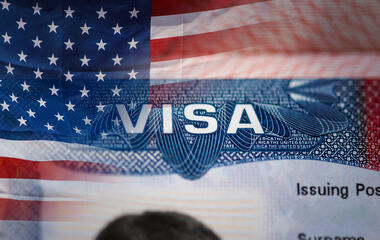Visa Trends: Revamping the U.S. International Education Strategy for Future Growth

As the United States prepares for the upcoming release of the Institute of International Education’s annual Open Doors report in November 2024, emerging trends suggest that India is set to surpass China as the primary source of international students in the US.
Visa Statistics: Indian vs. Chinese Students
Data from the United States Citizenship and Immigration Services’ Student and Exchange Visitor Information System (USCIS SEVIS) indicates that by May 2024, there were 351,106 active Indian students in the US, compared to 246,883 from China. This trend is underscored by a notable increase in the issuance of F1 student visas to Indian students since 2020. Specifically, India received 80,451 F1 visas in 2021, which rose to 115,115 in 2022 and reached 130,730 in 2023.
2024 F1 Visa Issuance Trends
However, preliminary data for 2024 suggests a decrease in F1 visa issuance for Indian students. From January to August 2024, only 63,590 F1 visas were granted, a slight decline from the 64,263 visas issued during the same period in 2021. This figure also shows a significant decrease compared to the numbers of 92,568 in 2022 and 102,655 in 2023. In contrast, China issued 72,516 F1 visas during the same timeframe in 2024, reflecting a shift in trends.
Historical Context: China’s Decline
Historically, China has been a major contributor to the international student population in the US but has observed a downturn in F1 visa issuances in 2024. Following a peak of 274,460 F1 visas in 2015, total issuances have declined, with only 61,894 F1 visas granted in 2022. These patterns suggest an overarching decline in international student mobility to the United States, raising concerns among prospective students and higher education institutions.
F1 Visa Recipient Trends
The combined share of F1 visa recipients from China and India was 50.64% in 2014. Despite fluctuations over the years, this percentage generally remained stable within the mid to high 40% range until it recorded 48.65% in 2023.
Impact of Visa Refusal Rates
An increase in visa refusal rates has been a significant factor contributing to the reduced issuance of F1 visas. The refusal rate for F1 visas rose from 14.80% in 2013 to 36.26% in 2023, indicating a broader trend of challenges in the admission process for international students rather than issues unique to specific countries.
Trends Among Other Countries
Other nations, including South Korea, Saudi Arabia, Kuwait, and Brazil, have also seen declines in F1 visa issuances, often due to decreased applications. In contrast, countries such as Nepal, Bangladesh, Pakistan, and Ghana are experiencing growth in F1 visa approvals, though their totals remain considerably lower than those from China and India.
Recommendations for US Policy
In response to these developments, experts recommend that the next US presidential administration collaborate with higher education institutions and government agencies to develop a comprehensive international education strategy. This strategy should aim to create a clear pathway from F1 visa issuance to work visa opportunities and permanent immigration options for international students, ensuring their contributions to the US economy through experiential learning and extended residency.
Complexities of Visa Denials
The challenges surrounding student visa denials, often based on perceived immigration intent, highlight the complexities of the consular decision-making process. A reconsideration of this policy may be necessary to prioritize immediate intentions rather than future assumptions about international students’ career trajectories.
Source: University World News




